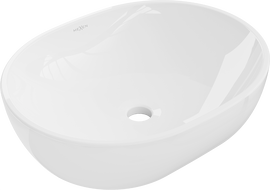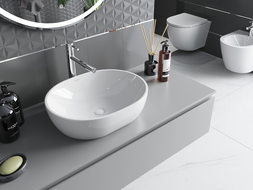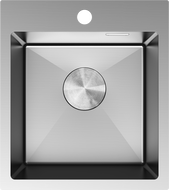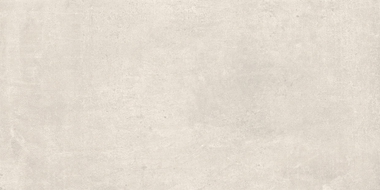
Are you planning to paint your walls and wondering how to combine wall colors so that the interior looks cohesive and aesthetic? Choosing the right colors is a key element of spatial arrangement that affects not only the appearance of the room but also the well-being of its inhabitants. Therefore, today we have decided to tell you more about how to properly match colors in such a way as to achieve a harmonious effect. We will discuss the color wheel, remind you of the rules for combining colors, and present inspiring combinations for every occasion.
What will you learn from this article?
- Why it is worth having at least basic knowledge about color combinations.
- Which colors work best on the walls of different rooms.
- What mistakes are most commonly made when painting walls.
How to combine wall colors?
Choosing the right colors for walls is a process that should be planned carefully. Wall colors not only define the character of the room but also allow you to change the proportions of the interior, affecting the atmosphere and overall perception of the space. A basic tool that facilitates this process is the color wheel, which can significantly ease the task of painting a room, whether it's necessary to do it on one wall or all of them.
Color wheel — how to achieve suitable color combinations?
The color wheel is a graphical representation of colors that helps in their proper combination. It is divided into three main groups:
- primary colors – yellow, blue, red,
- secondary colors – achieved by mixing primary colors, e.g., orange, green, purple.
- complementary colors – lying on opposite sides of the color wheel, e.g., yellow and purple, blue and orange.
Having a good understanding of the color palette allows you to combine colors in a thoughtful and aesthetic way.
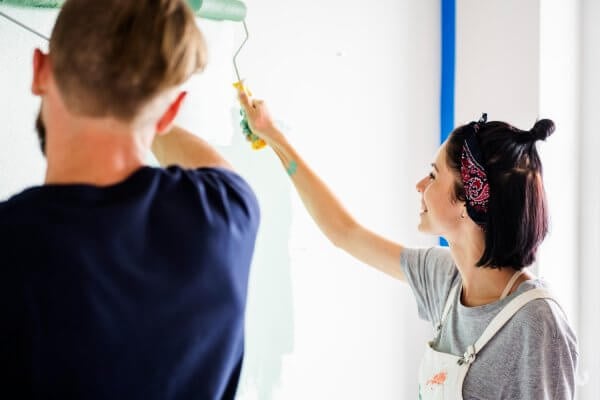
Rules for combining colors
When planning color combinations on walls, it is worth considering a few proven principles:
- analogous colors – choosing neighboring colors on the color wheel, e.g. greens and blues. They create a cohesive, soft effect.
- complementary colors – pairing colors from opposite sides of the color wheel, e.g. orange with blue. They add energy and contrast to the interior.
- light and dark shades – combining lighter colors with intense shades (e.g., white with emerald green) to create an interesting contrast.
Combining wall colors in practice
Each interior has its purpose, and the right wall colors can emphasize its character:
- Living room – in this case, warm colors such as beige, ochre, or light orange work great, adding coziness to the interior. In large living rooms, you can boldly experiment with contrasts, e.g. pairing white with navy blue, which highlights the elegance of the space.
- Bedroom – it's worth choosing muted shades like pastel blues, pinks, or greens for relaxation. In recent years, dark colors like graphite or bottle green, which create an intimate and calm atmosphere, have also been trendy.
- Kitchen – suitable for it will be intense colors, such as red, which stimulates appetite, or greens, which add freshness. In modern kitchens, pairing white with wood and black accents works well too.
- Bathroom – although white is the most common choice for painting walls in this room, it's worth considering subtle shades of blue, gray, or sandy beige. In modern bathrooms, dark colors like graphite or anthracite are increasingly appearing, which when combined with large mirrors create a luxurious effect.
- Small rooms – light colors like white, beige, or pastel shades will optically enlarge the space of each.
How to combine colors in small interiors?
In small rooms, it's essential to match colors in such a way that the space feels larger. Here are a few tips:
- light shades – walls in white, gray, or light blue.
- darker accents – paint one wall in an intense color, e.g. navy or green, to give depth to the interior.
- monochromatic combinations – combining different shades of one color, e.g. light beige with dark brown.
- mirrors and accessories – proper placement of mirrors and choosing decorations in light colors, e.g. gold or silver, can also optically enlarge the space.
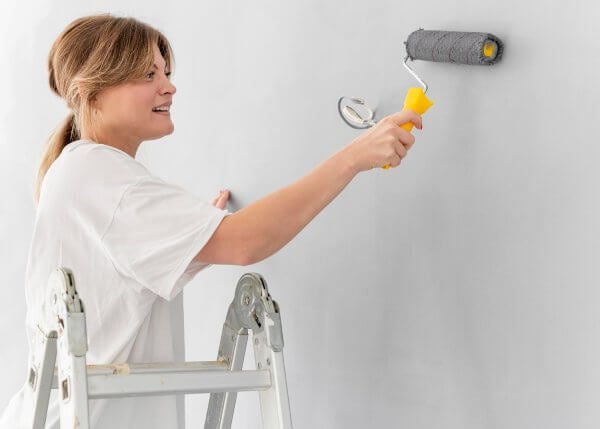
Trendy in wall color combinations
Current interior trends emphasize the importance of contrasts and natural inspirations. Here are a few examples:
- black and white combination – a timeless classic, ideal for modern interiors,
- earth tones – browns, beiges, and greens create warm, natural arrangements,
- pastel shades – pink, blue, and mint work well in bedrooms and children's rooms,
- intense colors – combining yellow with purple or navy with orange will bring energy and modern style,
- industrial accents – the raw red of brick combined with graphite and concrete shades is a hit of recent years.
What to avoid when combining wall colors?
Combining colors is both an art and a challenge. To avoid chaos, it's important to keep a few rules in mind:
- not overdoing the number of colors – it is advisable to limit to 2-3 colors in one room,
- avoiding too dark colors in small spaces – they can make the interior feel claustrophobic,
- paying attention to lighting – sunlight can change the perception of colors. In rooms with low natural light, it's better to opt for light colors to avoid a feeling of oppression,
- avoiding intense contrasts without preparation – in case of uncertainty about the effect, it is good to limit yourself to using paint samples and testing colors before painting.
Why knowledge of the color wheel can be significant in the wall painting process?
Painting walls is an excellent way to give interiors a new character. By properly combining colors, one can optically enlarge the space, improve the proportions of the interior, and create arrangements that promote relaxation.
When planning painting, it’s always important to remember the basic principles derived from the color wheel. Matching the palette to the function of the room and considering the character of the interior has a very significant impact. The final choice of colors should always be backed up by tests and adjustments to the lighting in the given interior. This will help avoid frequently made mistakes by both amateurs and sometimes professionals.


